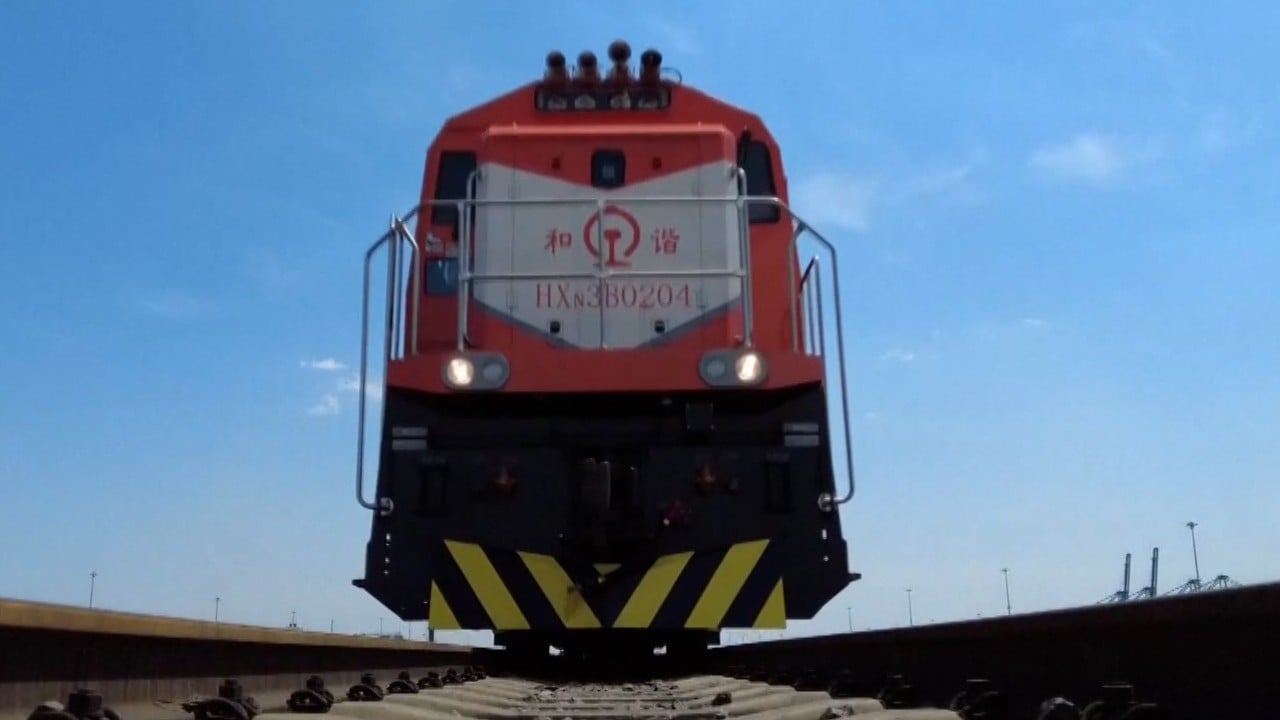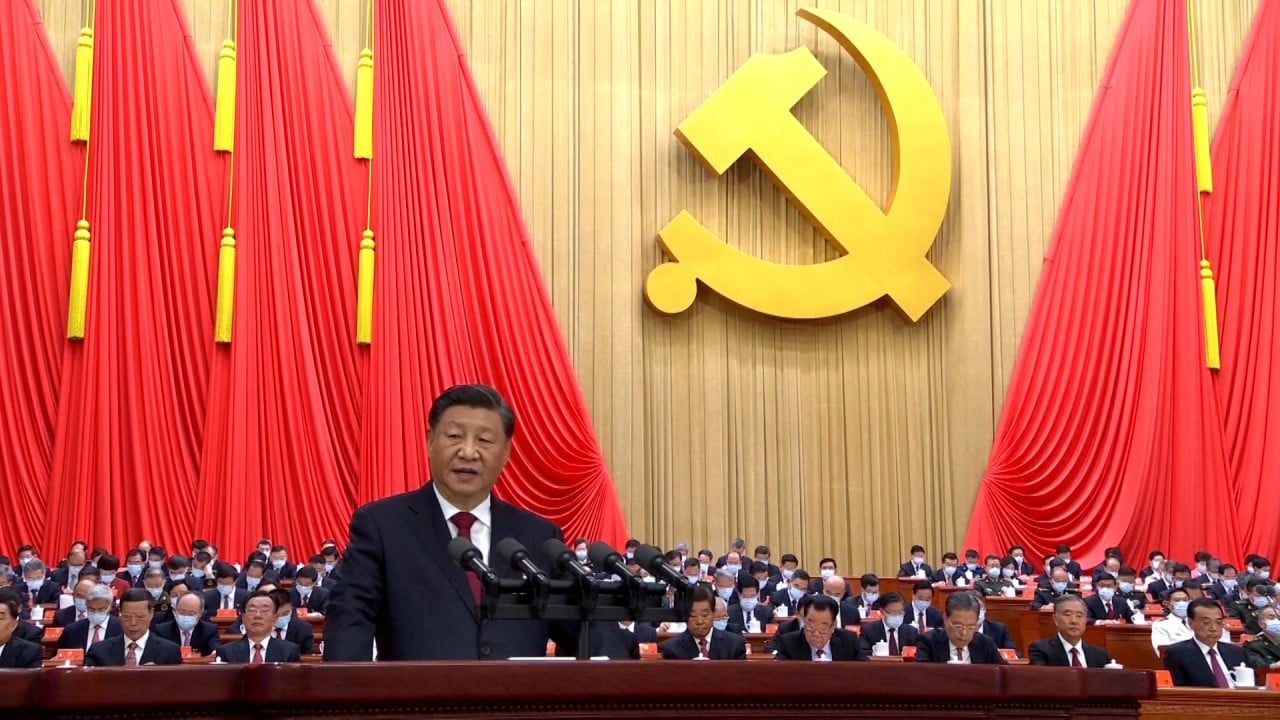
How China is bypassing cargo chokepoints to speed up Africa trade
- New rail-sea hybrid transport options stretching from western China as far as Europe are speeding up goods movement to Africa
- New routes imply the belt and road plan is working, and are also in line with China’s aim of boosting exports from less-developed western region
The city of Chengdu in southwestern China opened the Chengdu-Europe-Africa rail-sea transport line this month to move freight to Morocco via the German port of Hamburg, as the North African nation emerges as the centre for tripartite trade.
The train, carrying mostly textiles from Chengdu, will arrive in Hamburg via the China-Europe Railway Express. The goods will then travel by sea to its final destination, Morocco’s Port of Casablanca.
The journey will take an estimated 35 days. The new line is expected to help companies in western China export goods to Africa as part of Beijing’s strategy to increase exports from the western provinces, which are less developed than coastal regions.
Morocco is a strategic location because of its proximity to Europe and the Middle East.
John Calabrese, head of the Middle East-Asia Project at American University in Washington, said it was notable that the new line ended in Casablanca since “China has worked assiduously to woo Morocco in recent years”.
“For decades, Algeria had been the primary focal point of Chinese engagement in the Maghreb,” Calabrese said.
A research note by the Hong Kong Trade Development Council (HKTDC) said Morocco was well placed for Chinese export manufacturers to reach African markets, and that they also could gain access to ports on the western Mediterranean and Atlantic.
“Firms can benefit from Morocco’s relationships with the European Union and countries in the Middle East,” the council said when Morocco signed the belt and road deal.
China-Europe rail trade set for upgrade as virus weighs on air, sea
In 2020, trade between Morocco and China reached US$4.76 billion. Morocco mainly exports calcium phosphate, raw copper and zinc ore to China, while primary Chinese exports to Morocco are tea, pile fabric and broadcasting equipment, HKTDC Research said.
Also this month, a goods train carrying 50 containers of apple juice concentrate left Tianshui in northwestern China’s Gansu province for Cape Town, South Africa.
The cargo will travel via train from Gansu to the port of Qingdao in eastern China, before sailing to Cape Town. Gansu is also an important production base for beef and mutton, as well as a vital supplier of vegetables for eastern China.
Continuity and caution key to China-Africa ties in Xi’s third term
South Africa is one of the biggest source markets for the minerals that power China’s industries, including diamonds, manganese ore, iron ore, gold, chromium ore and ferroalloys. Beijing imported goods worth US$33.2 billion from South Africa in 2021 – up by nearly 60 per cent from 2020, when trade took a hit because of the coronavirus pandemic.
China sold goods worth US$21.1 billion to South Africa last year, involving mainly broadcasting equipment, computers and cloth articles, according to Chinese customs data.
Calabrese said opening new routes served not just an economic purpose but a political one as well, since it conveyed the message that the Belt and Road Initiative was succeeding. He said the Chinese government provided generous subsidies for these routes, making it difficult to assess their economic viability or profitability.
“Technical advancements such as refrigerated containers have helped make the transport of goods via rail/multimodal networks feasible and faster,” Calabrese said.
He said such transport could be cost-effective for certain high-value-added goods where profit margins were slim and multimodal shipping was less expensive than air freight.
“To the extent that the multimodal routes bypass ‘chokepoints’ they are a way to diversify and secure commercial traffic,” Calabrese said.
He said since these routes originated in western or southwestern China, “they are in keeping with President Xi Jinping’s aim of injecting some vitality into the local economies of areas of China that have lagged behind”.
China-Europe rail trade posts record traffic via Xinjiang, despite tensions
“We will work faster to develop the Hainan Free Trade Port, upgrade pilot free trade zones, and expand the globally oriented network of high-standard free trade areas,” Xi said in his report to the just-concluded congress.
Lauren Johnston, a China-Africa researcher at the South African Institute of International Affairs, said the hybrid nature of the links acted as insurance – “if one passageway gets blocked, there is a second”.
She said it made more sense to reach North Africa via that route than to cross the Pacific, Indian and then even the Atlantic oceans.
It also helps to diversify China’s economy regionally, she noted. “The train connects poorer or more remote western China to world markets along the Eurasian peninsula. The seabound trade route leaves from China’s established coastal economies,” Johnston said. “It is also about reducing inequality within China.”
In addition to the China-Europe Railway Express, the China-Africa Rail-Sea Express Co was established in September last year, marking a new step in Hunan-Guangdong-Africa transport.
This channel typically moves products such as grain, car parts, chemicals, grain seeds and construction machinery, according to a recent report by China-Africa Business Council. The first phase covers 11 seaports in Africa and 20 roads and railways leading into the continent’s interior.
The China-Africa Business Council’s 2022 report on the Chinese role in African supply chains noted that the rail-sea express had been working on “end-to-end” logistics, and transport channels and services linking either side.
On September 15 last year, a train carrying 1,935 tonnes of aid to Africa departed from China’s Zhuzhou Logistics Base to Nansha port in southern Guangdong province, from where the shipment arrived by sea in Nairobi, Kenya, the journey marking the launch of the Hunan-Guangdong-Africa rail-sea transport channel.
Chinese provinces race along Xi’s ‘green lanes’ to Africa
Compared with past alternatives, the transport time was shortened by eight to 12 days and costs reduced by 60 per cent, the council said.
Todd Litman, executive director of the Victoria Transport Policy Institute, an independent Canadian research organisation, said the Silk Road rail system and other rail connections between China and Africa could benefit many.
Since China was the world’s largest exporter, “its economy will probably benefit from more international trade links”, Litman said.
“There is criticism of China’s growing influence in Africa, particularly when poor countries go into debt to purchase Chinese-built infrastructure [railways, ports, highways] but I’m sure that Chinese officials could highlight the future benefits of these investments.”



